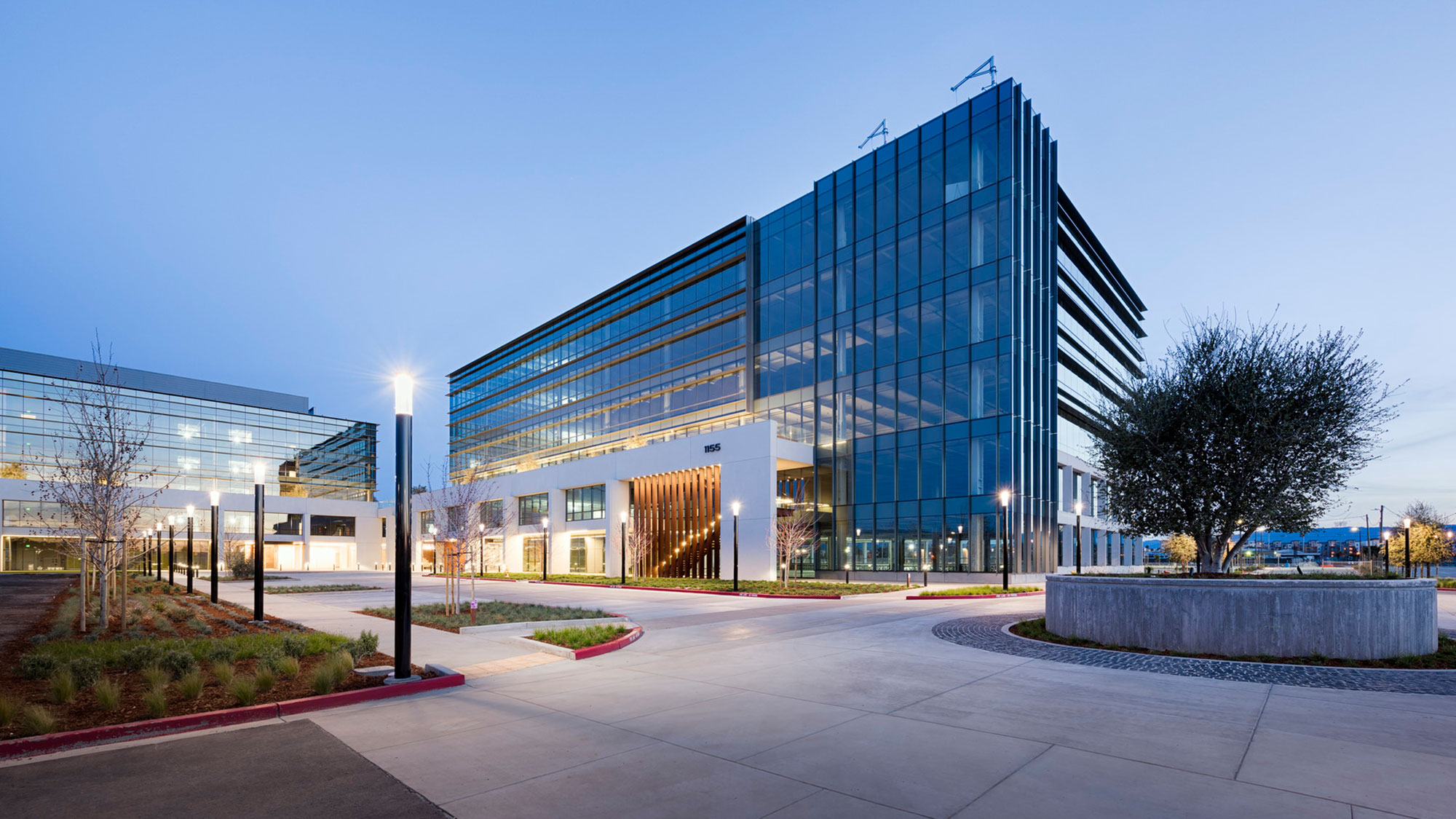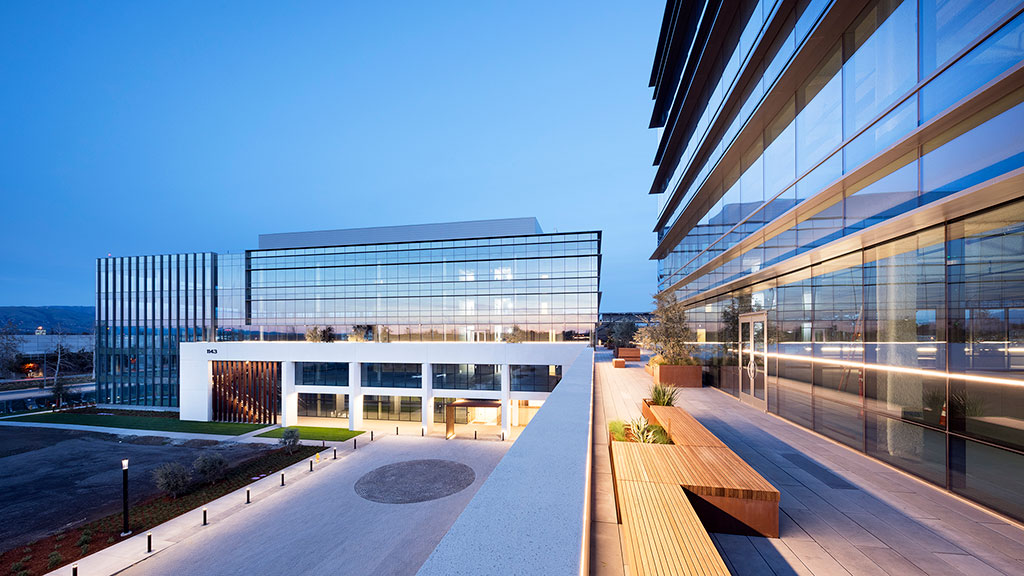How to Reposition Office Space for Market Differentiation
July 25, 2023 | By Sarah Brengarth
Over the last several years, we have learned that work is no longer confined to the office. In our 2022 U.S. Workplace Survey, we found that employees reported that they spend about half their time working from the office, with the other half being spent working from a wide variety of different locations, ranging from their homes to coffee shops to parks. And while that may seem like a grim statistic for landlords, building owners, and heads of real estate, it sheds light on a unique opportunity to shift the way we design, lease, and view office space.
Since COVID, remote and hybrid work arrangements have become increasingly popular in the tech industry. This shift to hybrid work has led to a reduced demand on the physical workplace and to a decrease in office utilization rates. Thus, tech companies have begun to reassess their real estate portfolios, which has led to historically high office vacancy rates and a surplus of underutilized office space.
Reimagining the Office as a Compelling Destination
While all of this is true, we also know that the office still serves an important role in our larger work ecosystem. People still need space to focus on their work and they are still longing for connection. As my colleague Duncan Lyons, global leader for Gensler’s Office Developers practice states, “office buildings are no longer just containers for people, but rather, experience superchargers.”
We must shift our thinking to focus less on workplace density and more on the experience and quality of space the office can deliver. Author Jacob Morgan echoes this sentiment in his book, “The Employee Experience Advantage,” where he points out that “in a world where money is no longer the primary motivating factor for employees, focusing on the employee experience in the most promising competitive advantage that organizations can create.”
According to Gensler’s 2022 U.S. Workplace Survey, 83% of employees reported that they would be more willing to return to the office if it were to offer a diverse mix of amenity-rich experiences, with younger generations showing a clear preference for hospitality-infused environments. But compelling experiences that come from thoughtfully, curated destinations take time to develop. In a time of economic uncertainty, when tech companies across Silicon Valley reported they are focused on plans to “do more with less” in their first-quarter earnings calls, few are willing to move forward with building out these types of spaces on their own.
Shared Amenities Are a Differentiator
Enter landlords and building owners. While tenants are often hesitant to build out destination programs that serve as magnets to bring employees back to the office, asset owners have an opportunity to reposition their properties by offering shared amenities that attract and support tenants while also generating revenue. Those who are willing to take on the upfront cost of building out these hospitality-inspired environments will set themselves apart in a saturated and competitive market while also taking steps forward to future proof their real estate assets. Ultimately, a building that has everything a tenant already needs is much more attractive than one that is a blank slate.
Flight to Quality
The “flight to quality” trend has continued to gain momentum since the pandemic. As CBRE pointed out last year, demand has shifted to the top of the market and high-quality buildings with sustainable features in prime locations carry less transition risk, making them more attractive to potential tenants. So, while this repositioning strategy doesn’t apply to all commercial real estate on the market, it does have the potential to be a viable solution for a large portion of our available office stock.
One property in particular that is well suited for this type of building transformation is the Coleman Highline in San Jose, California, where Roku announced earlier this year that they would be putting one full building on this property for sublease. The LEED Silver, Class A business campus is close to multiple forms of transit, creating an easily accessible, amenity-rich destination in a previously underdeveloped suburban area.

Below are three tactical considerations we see our clients starting to explore as they think about how to reposition their underutilized assets:
1. Take on the responsibility of building out shared amenities. Tenants are looking for office space in buildings that not only meet their needs but also provide a great experience. Some landlords have started to incorporate coffee shops into their base building lobbies to help activate what was formerly a very transient space and create buzz. Programs like these create a natural gathering space within the building for tenants, while also serving as a destination for the surrounding community.
Another space type that we see building owners starting to incorporate into their underutilized assets are libraries or focus spaces. According to Gensler’s 2023 Global Workplace Survey Comparison, quiet, tech-free zones were one of the top two spaces that have the greatest impact on workplace effectiveness and experience. By offering this program as a shared amenity, building owners can provide tenants and visitors with alternate workspaces to complete individual work.
2. Break down your campus into bite-sized pieces. In this time of extreme change, we are all looking for flexibility. Many of our clients are looking into how they can strategically subdivide floor plates so they can flex between multitenant and single floor tenant layouts with minimal architectural interventions. For example, we have one client that is in the process of repositioning one of their buildings in downtown Sunnyvale for potential tech tenants. As part of this effort, they have chosen to build out fully equipped conference rooms on every floor. Our client has located these conference rooms in such a way that allows them to leverage this built architecture for multiple demising strategies so each floor plate can quickly adapt to serve one, two, or four tenants, depending on market demands.
3. Double down on sustainability as a market differentiator. Ever since the SEC proposed rules governing climate-related disclosures from all public companies, ESG reporting has become a necessity for tech companies. Many landlords are looking to add both active and passive sustainable features, like solar panels or skylights, into their buildings because they can help set them apart as tenants look to occupy spaces that support their broader environmental goals.
But the benefits don’t stop there — building owners that integrate sustainable elements or pursue environmental certifications can offer their tenants a competitive edge as they look to attract and retain talent. Gen Z finds it extremely important for businesses to operate in an environmentally sustainable way and reduce carbon emissions. Deloitte’s 2022 Global Gen Z and Millennial Survey revealed that nearly two in five respondents turned down a job because it was inconsistent with their values.
By implementing these strategies and tactics, building owners and tenants can stand out in a competitive market. If you would like to reposition office space or other underutilized assets to align with new work realities, please contact us to learn more.
For media inquiries, email .

